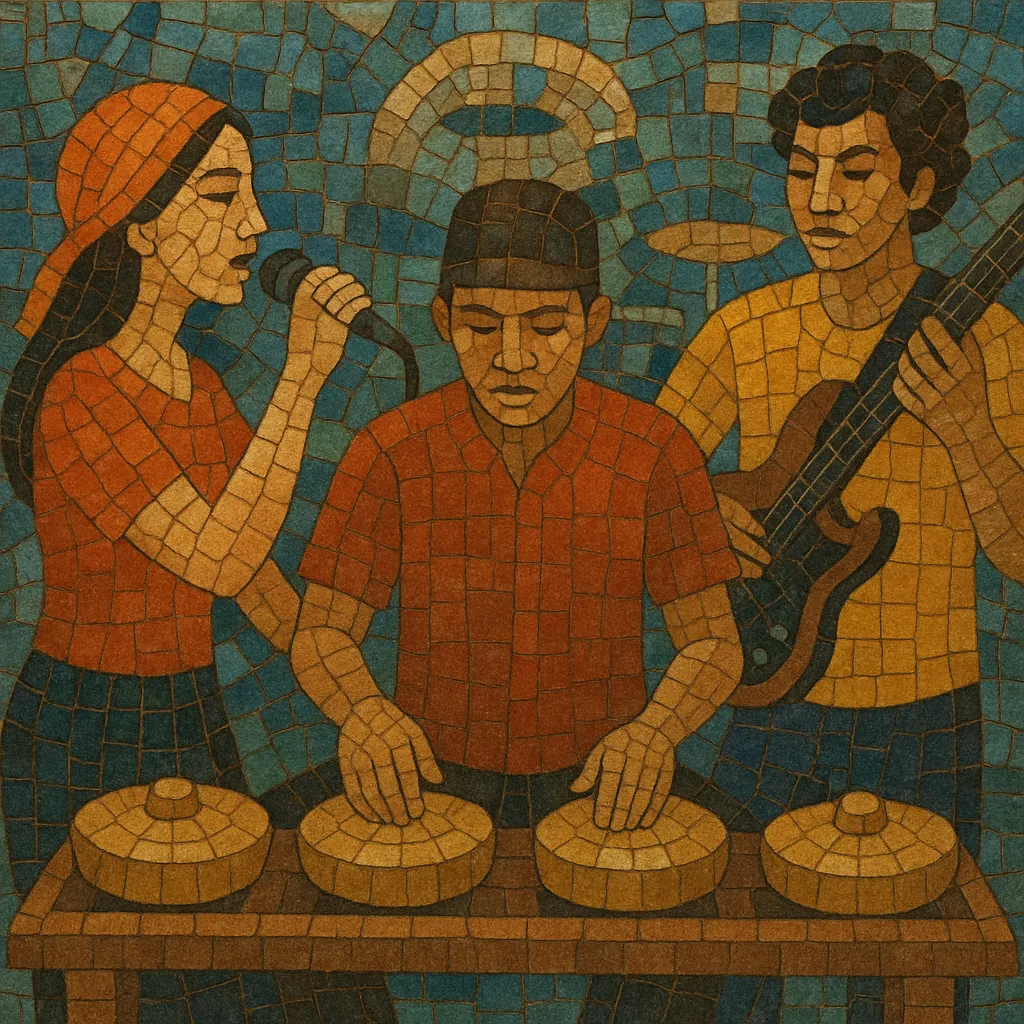Talempong goyang is a contemporary, dance‑oriented offshoot of Minangkabau talempong music from West Sumatra, Indonesia. It preserves the interlocking, cyclical kettle‑gong patterns of traditional talempong while adding modern backline—keyboard, electric bass, and drum machine or live drum kit—to create an upbeat groove designed for social dancing.
The style is prominent at weddings, community celebrations, and stage shows across the Minangkabau diaspora, where its catchy ostinati, call‑and‑response hooks, and bright metallic timbres are blended with pop and dangdut aesthetics. Songs are typically sung in Minangkabau or Indonesian and favor concise, chorus‑driven forms that showcase both the talempong’s shimmering texture and a steady, danceable 4/4 pulse.
Talempong goyang grows out of Minangkabau talempong traditions—small kettle gongs played in interlocking parts—long a staple of ceremonial and social music in West Sumatra. The region’s musicians have experimented with modernization since the mid‑20th century, but talempong goyang specifically reflects a dance‑forward update aligned with local party culture.
With the widespread availability of portable keyboards, sound systems, and one‑man‑band (“organ tunggal”) set‑ups in the 2000s, ensembles began coupling talempong textures with steady electronic or live drum grooves. The descriptor “goyang” (“to shake,” colloquially “to dance”) captured the intention: keep the interlocking talempong lines, but frame them with pop/dangdut energy for continuous dancing.
Through wedding circuits, community festivals, VCD/DVD releases, and later YouTube and social media, talempong goyang became a recognizable Minang party sound. Arrangers borrowed concise verse‑chorus forms and bassline motion from pop/dangdut while preserving hallmark talempong ostinati and antiphonal patterns, making the style appealing both to tradition‑minded audiences and younger dancers.
Today, talempong goyang is a flexible performance practice rather than a rigidly codified subgenre. Line‑ups range from compact groups (talempong + keyboard + drums) to fuller bands with saluang (bamboo flute), sarunai (reed oboe), and vocals. Repertoires mix traditional melodies, Minang pop hits, and new originals, all arranged with an emphasis on steady 4/4 drive, bright gong timbres, and memorable choruses.


